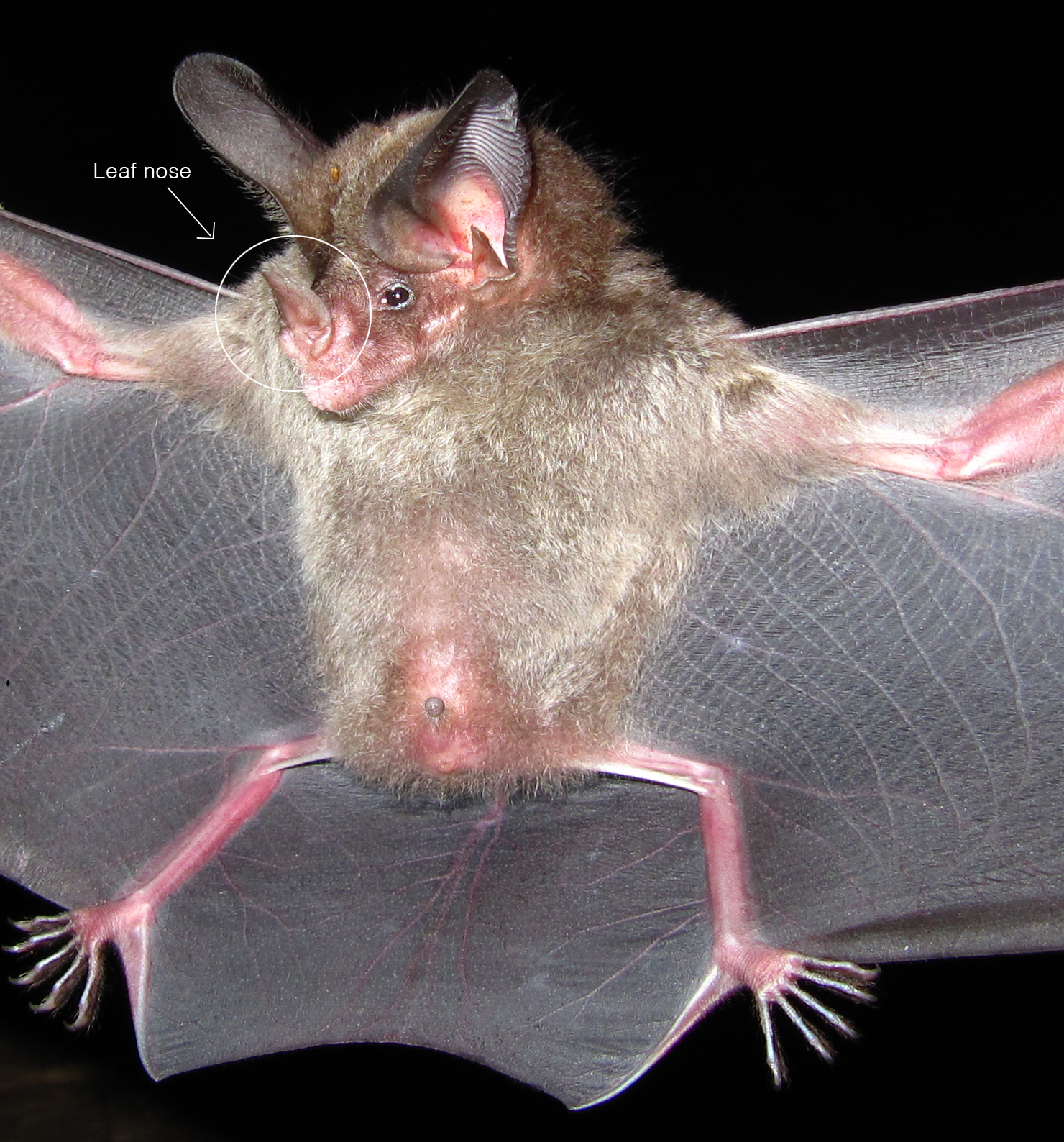Leaf-nosed bats
(by Danny Zurc)
Bats species have different nose forms. Studies have suggested that this complex organ is a highly functional structure.
For example, some echolocation calls are emitted by bats from nasal passages, in a process known as ‘nasal emission’. Those nasal-emitting bats have ‘noseleaves’, a structure that might serve acoustic functions. One hypothesis is that the bats moves the nose-leaf during echolocation, probably to control the vertical distribution of orientation sounds.
Micronycteris microtis is good example of such specialised-facial-morphology bats. This member of the Phyllostominae sub-family can be found in South and Central America. This species uses its nose when producing echolocation calls to better localize and target objects.
Such calls have broadband pulses containing several harmonics between 50 and 160 kHz. In this recording, made in the Caribbean region of Colombia, Micronycteris microtis was registered with a peak frequency of 80 kHz (fig. 2). This species also has large ears (18-22 mm), which is a useful morphological characteristic by which to recognise it.
In Colombia it inhabits Andina and Caribbean regions from 0 at 310 masl. (Photo by Andrea Bustca).








